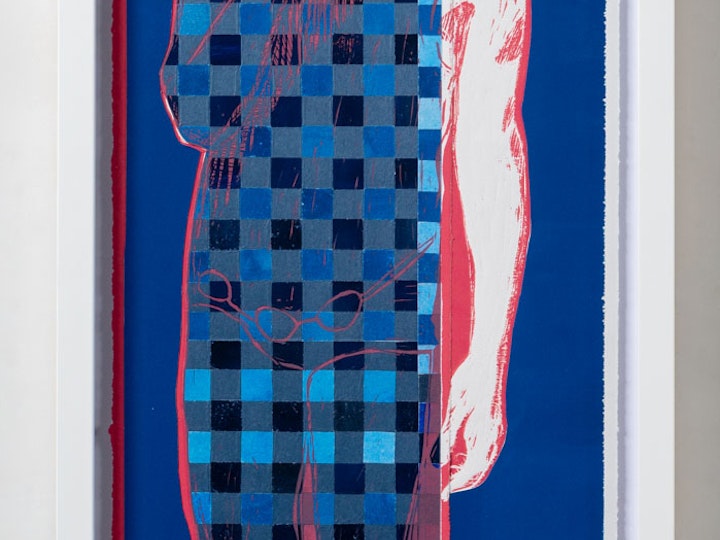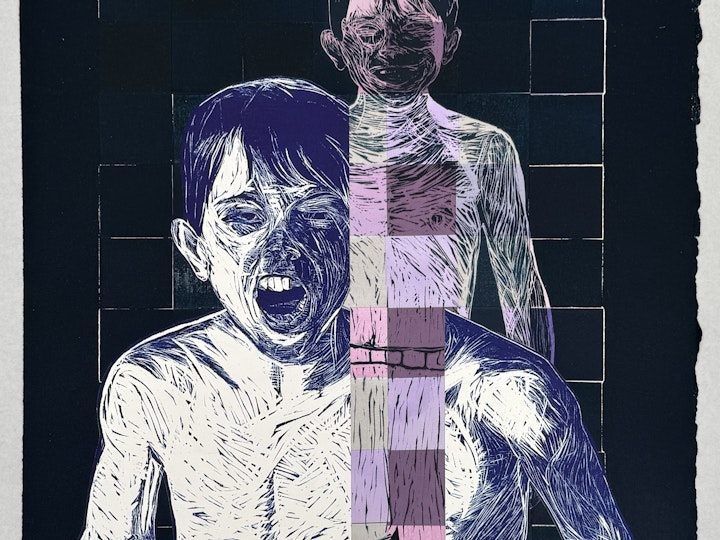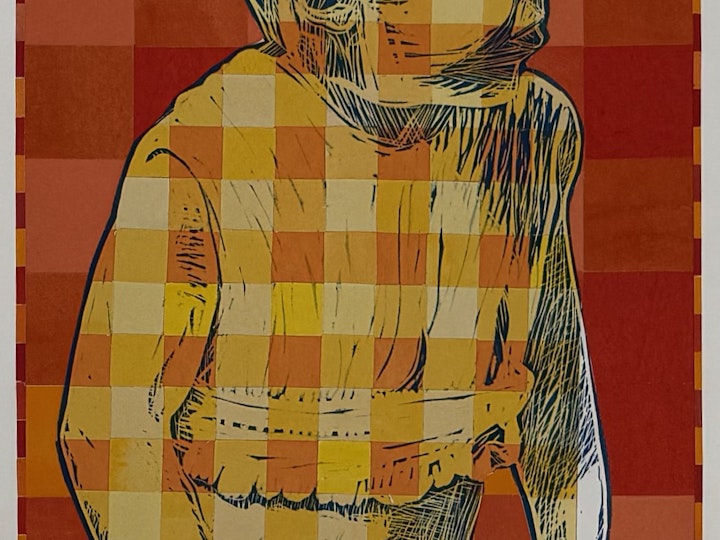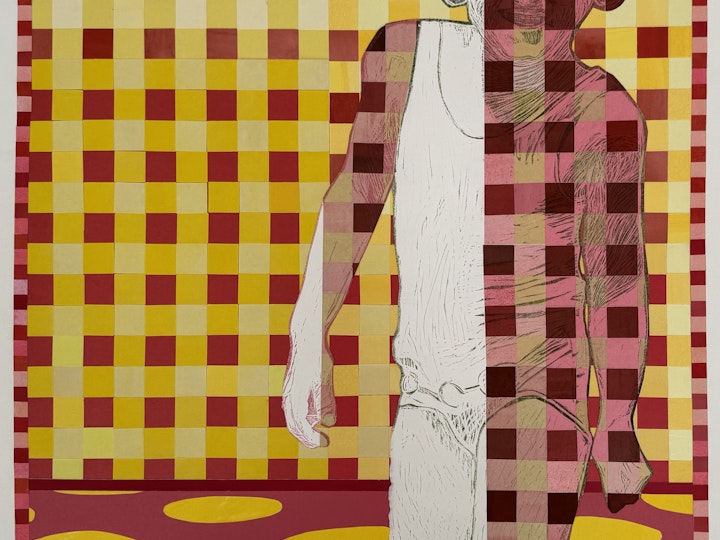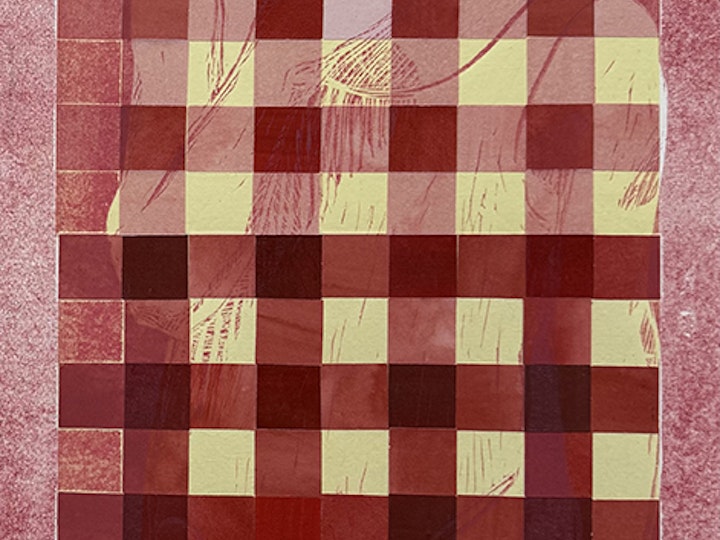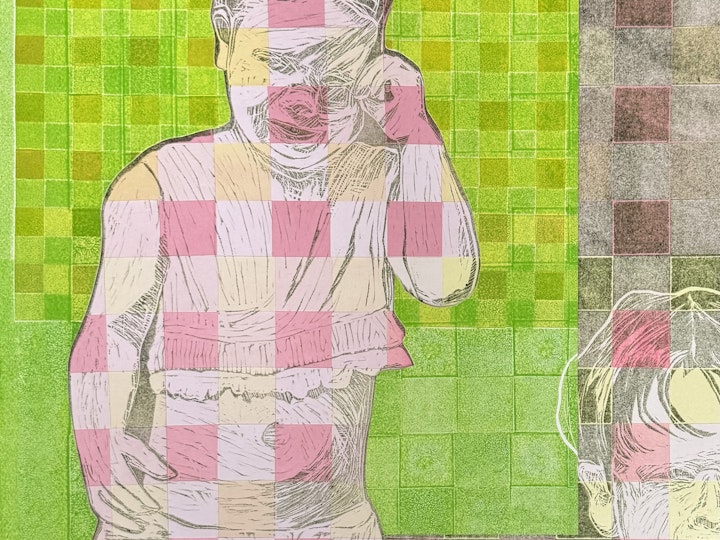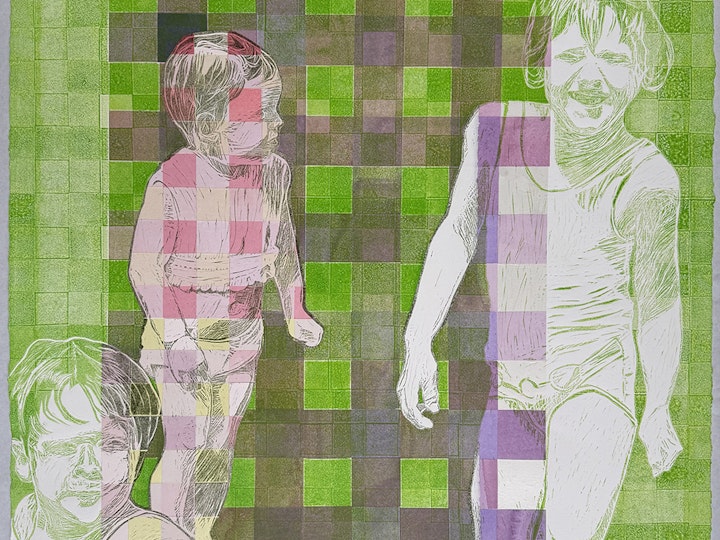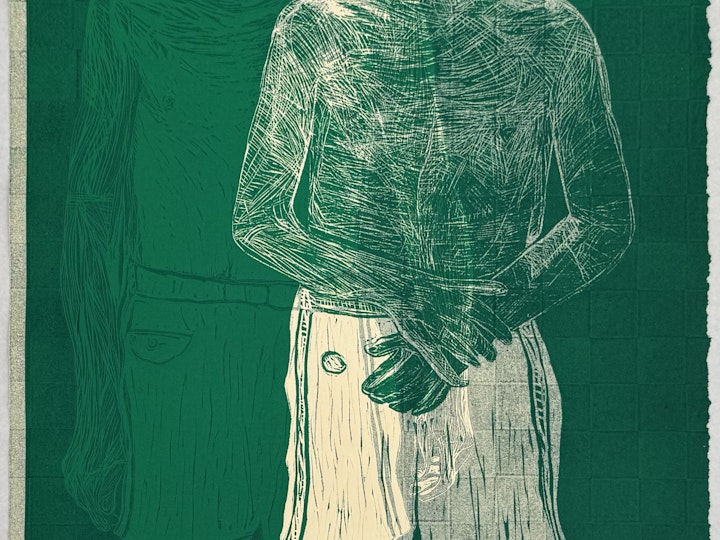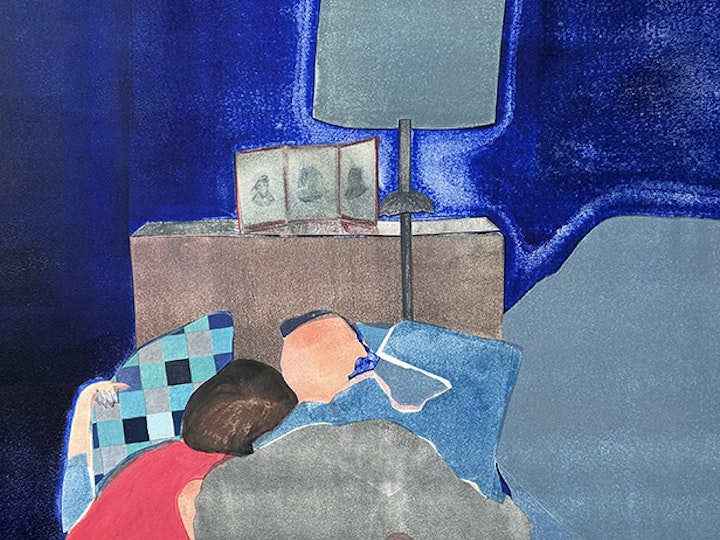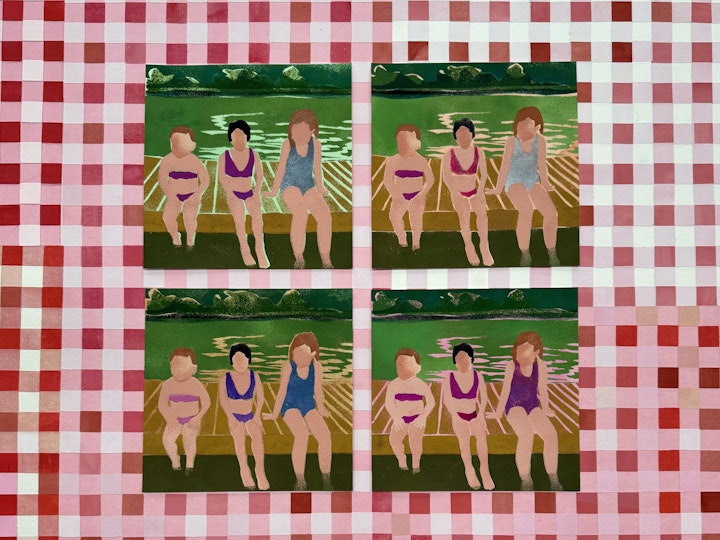So much harm happens insidiously during the millions of small moments at home, even among well-meaning family. Gender constructs are fostered, roles cast, attention centered on some rather than others. I base this work on a small stack of family photographs from the late 1960s. These are images that could have cast a halo of nostalgia and sentimentality, but do not.
Bathing-suited sisters sit on a dock. But they are posed like objects on a shelf.
A cowboy-costumed boy lays over two ottomans watching TV. His sister tries to get into the photo, sitting on the floor, first on one side of him and then the other.
The girls and their brother are in the yard. The sisters merely watch as their brother mans the garden hose.
A red-dressed toddler nuzzles her father laying on the coach on a Sunday afternoon. Hungover, he keeps reading the Saturday Evening Post.
When I unearthed the snapshots several years ago, I was struck by how consistently the girls were merely still, placid observers while their brother was active and emotive. I re-construct what I learned from seeing the photographs fresh after 50 years. I rewrite the past. I employ printmaking methods not in the customary way as a means to produce multiple images of the same thing, but to transform an image. In works exponentially larger and more vibrant than the tiny black and white source snapshots, I create variations. Some show the girls fragmented, obliterated. But in others, the girls come alive. They are re-cast into the light, centered.
Gingham pattern grounds much of my work. Made from hundreds or thousands of painted, cut and collaged squares per artwork, the gingham pattern harkens to quaint family activities like picnics. I chose gingham for its hominess and also for its physical quality of combining a dark, medium and light color in a repeating pattern. It’s symbolic of a continuum of gender, of familial combining of one parent and another, and also of the past, future and all that connects in-between.

